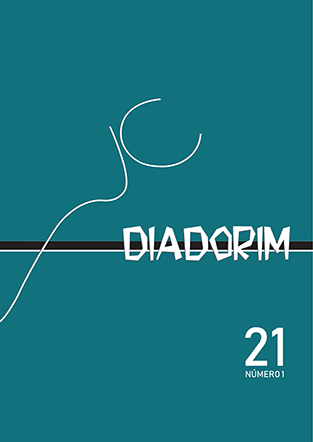The troubadour songs and their permanence: updates in lusophony
DOI:
https://doi.org/10.35520/diadorim.2019.v21n1a20537Keywords:
Galician-Portuguese lyric, Resonances, Camões, João de Deus, Natalia Correia.Abstract
The article was aimed at updating the troubadour language in Portuguese literature, at the same time as it was a process of renewal and reinterpretation. For Saraiva and Lopes, the woman, the world dominated by the patriarchal legacy. Natalia Correia (as an essayist) made the love songs begin a modern statement, highlighting the figure of the woman in a medieval theocentric universe in the center of worship. If the successive times also in a vocal and renewing way. For a poetic analysis, the three moments of Portusongs of love and friend developed, from a Middle Ages, in a revolutionary way, they can also become guese literature: the classic, the modern and the contemporary, respectively with Camões, João de Deus and Natalia Correia (as poet).
References
ABDALA JR., Benjamin. História social da literatura portuguesa. São Paulo: Ática,
CAMÕES, Luís Vaz. xxxxxxxxxxxxxxxxxxxxxxx
CORREIA, Natália (seleção, introdução, notas e adaptação). Cantares dos trovadores
galego-portugueses. Lisboa: Editorial estampa, 1978.
_____. O sol nas noites e o luar nos dias II. Lisboa: Círculo de leitores, 1993.
DEUS, João de. Campo de Flores. Lisboa: Europa-América. 1982.
LOPES, Óscar; SARAIVA, António José. História da literatura portuguesa. 7.ed.
Santos: Martins Fontes, 1973.
Downloads
Published
Issue
Section
License
Copyright transfer -- Authorization to publication
If the submitted article is approved for publication, it is already agreed that the author authorizes UFRJ to reproduce it and publish it in Diadorim: revista de estudos linguísticos e literários, the terms "reproduction" and "publication" being understood as defined respectively by items VI and I of article 5 of Law 9610/98. The article can be accessed both by the World Wide Web (WWW) and by the printed version, with free consultation and reproduction of a copy of the article for the own use of those who consult. This authorization of publication is not limited in time, and UFRJ is responsible for maintaining the identification of the author of the article.

The journal Diadorim: revista de estudos linguísticos e literários is licensed under a Creative Commons Attribuition-NonCommercial 4.0 International (CC BY-NC 4.0).

